Presentation
48 hours of abdominal pain and vomiting
Patient Data
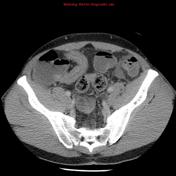

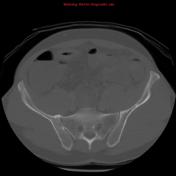

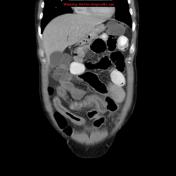

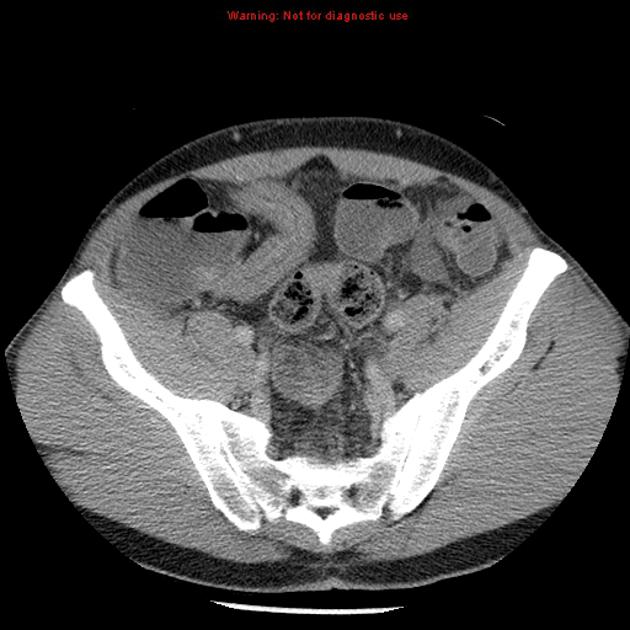
Greater than 30 cm contiguous segment of terminal ileitis with luminal narrowing mural thickening and mesenteric venous dilatation (known as the comb sign). There is dilatation of the more proximal small bowel consistent with a degree of obstruction.
In addition there is right sacroiliitis with partial ankylosis.
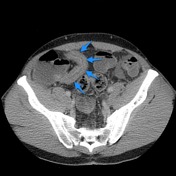
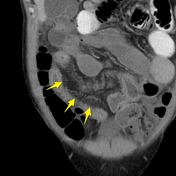
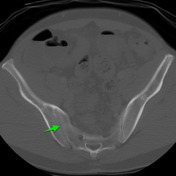

Thickened terminal ileum (blue arrows) is associated with prominence of the mesenteric vessels (yellow arrows) known as the 'comb sign'. The sacroiliac joint on the right is mostly ankylosed (green arrow).
Case Discussion
This case illustrates appearance consistent with active terminal ileal Crohn's disease with enteropathy associated sacroiliitis.




 Unable to process the form. Check for errors and try again.
Unable to process the form. Check for errors and try again.